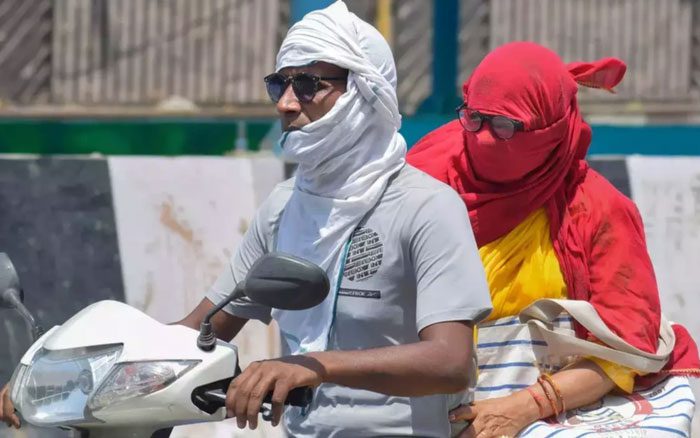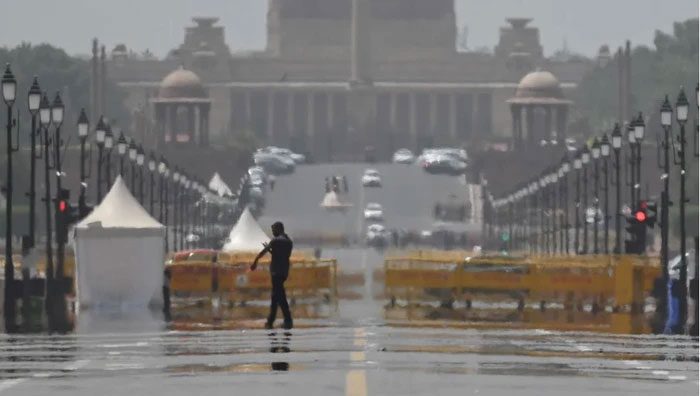According to The Straits Times (Singapore), meteorologists have recently recorded temperatures reaching 45 degrees Celsius in India, Thailand, and Myanmar; 42-43 degrees Celsius in Bangladesh, Laos, Nepal, and China. This is a level of heat that most of these countries have not experienced in decades.
Climatologist and weather historian Maximiliano Herrera noted that the continent is enduring the “worst April heatwave” in history.
“The situation is going to get worse,” he warned.
Climatologists state that this is just the beginning of a prolonged drought that could worsen due to the El Niño weather phenomenon expected to appear by the end of 2023.

States in Eastern and Northern India are experiencing unusual heat. (Image courtesy: Times of India).
Life Disrupted
At least 13 people have died from heatstroke in Maharashtra, western India, recently. In Ahmedabad, the most populous city in Gujarat, the heat was so intense that freshly laid asphalt melted before it could dry.
At least two other states in India—Tripura in the northeast and West Bengal in the east—have ordered schools to close as temperatures soar above 40 degrees Celsius.
The heatwave has also prompted Bangkok (Thailand) to warn residents to limit outdoor activities. In the Bang Na district, temperatures reached 42 degrees Celsius, while the heat index, which includes humidity and factors that measure perceived temperature, hit a record 54 degrees Celsius, according to ABC News citing the Thai Meteorological Department.
Mr. Mon Lauron, a business consultant in Manila, shared that he visits shopping malls more frequently to escape the intense heat.
In Yangon, Myanmar, taxi driver Ko Thet Aung revealed that he has to stop driving during the hottest parts of the day.
“I can’t drive if the temperature is too hot during the day,” he said.
The surge in electricity demand has overburdened the power grid in low-income countries like Bangladesh, forcing the nation to cut power to millions of consumers.
“It’s hard for us to sleep at night without electricity; it’s even more distressing than fasting all day,” said Munna Khan, a resident of Ashulia, a suburb of the capital Dhaka.
Scientists assert that climate change is the root cause of increasing heat levels.
However, according to meteorologist Jason Nicholls, it is human-induced activities that are causing heatwaves to last longer and intensify.
Dr. Fahad Saeed, a climate policy expert at the Climate Analytics organization (Germany), stated: “This year’s record heat in Thailand, China, and South Asia is a clear climate trend and will pose public health challenges for years to come.”

Mirages forming on Kartavya Road due to heat in India. (Image: Getty).
“The extreme heat we have witnessed in the past few days will most severely affect the poor. It could even threaten the lives of those who do not have access to cooling systems or proper shelter,” he said.
El Niño Likely to Worsen Conditions
Mr. Carlo Buontempo, Director of the Copernicus Climate Change Service of the European Union, told Reuters: “El Niño is often associated with record high temperatures globally. It is still unknown whether this will occur in 2023 or 2024, but I believe the likelihood is there.”
The warmest year on record to date was 2016, coinciding with a strong El Niño event.
Professor Friederike Otto, a senior lecturer at the Grantham Institute at Imperial College London (UK), stated: “If El Niño develops, it is likely that 2023 will be even hotter than 2016, as the planet continues to warm due to ongoing fossil fuel use.”


















































